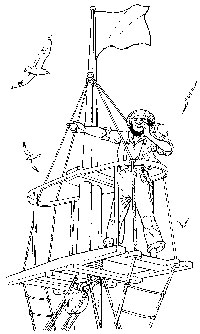 |
There are a lot of industries experiencing bad news these days. But, the veteran for bad news is the New England fishing industry. However, recent efforts to restore river herring have brought good news. Although this news is in the context of bad news, in that river herring are in trouble along most of the east coast, it holds the hope that Maine will maintain its control over this valuable fish in Maine waters.
The Atlantic States Marine Fisheries Commission (ASMFC) wanted to put in place a moratorium on the commercial harvest of alewives from Maine to Florida. Alewife stocks have been low for a long time. Loss of habitat, pollution, and overfishing have hit alewives hard south of Maine.
At the last ASMFC meeting, the Maine Department of Marine Resources (DMR) submitted motions which passed unanimously or by a wide margin, that would recognize a state having put in place sustainability measures in their alewife fishery, and by so doing the moratorium could be lifted.
Maine has had sustainability measures in place, some for 200 years, as on the Damariscotta River. More recently, the removal of the Edwards and Fort Halifax Dams has resulted in a Sebasticook River alewife harvest that may, this year, be the largest in the United States. Passage last year of Senator Damon’s bill to reopen a fishway on the St.Croix River has opened up 16 miles of access to fresh water habitat.
Maine therefore was already in compliance. It is in fact the model for the other states.
The almost instant response by alewives to these reopened areas is evidence that alewives will return if adequate access is available. It is also evidence that the measures that Maine has had in place for so long have maintained Maine’s alewife resource at a higher level than the other Atlantic states.
The other New England states, in particular, Massachusetts, have had little success reintroducing alewives to their once, and not that long ago, well-stocked rivers. It may be too late for sustainability measures in some states that have too long ignored them.
Removing dams, building new well-designed fishways, repairing disused old fishways, monitoring alewife bycatch in the Gulf of Maine herring fishery, and public awareness are key components in the restoration process.
The potential value to Maine of success in this is enormous.
|





